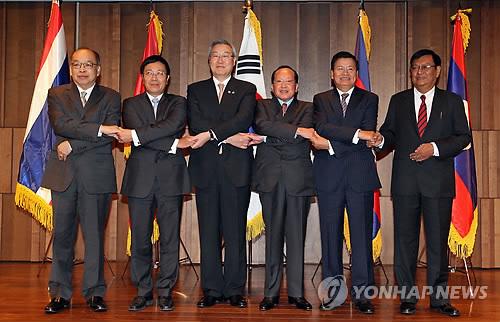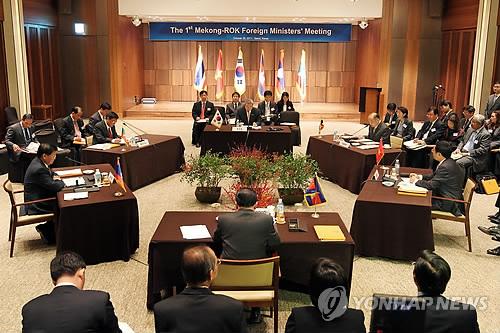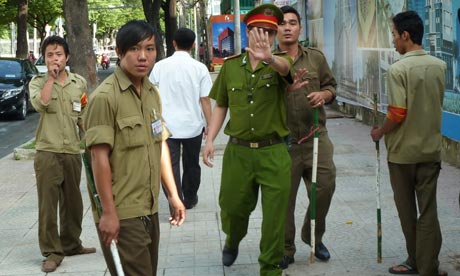By LIZ GOOCH
Published: October 30, 2011
Source: NYTimes
KUALA LUMPUR, MALAYSIA — Across the 10 countries that constitute the Association of Southeast Asian Nations, a diverse regional bloc encompassing 600 million people, the higher education landscape varies greatly.
From highly developed Singapore, which has two universities that often place well in international university rankings, to countries like Laos, which only established its national university in 1996, the region is home to an eclectic collection of institutions.
But with higher education recognized as a vital tool to stimulate economic growth in the region, efforts to raise standards and encourage greater collaboration among universities are gaining pace as Asean’s 2015 deadline to establish an integrated economic community draws nearer.
Universities are working on providing more opportunities for student exchanges within the region, credit transfer systems and improving quality assurance mechanisms.
Although there may be some similarities between what Asean is trying to achieve and the European Union’s Bologna Process, which seeks to harmonize the Continent’s higher education system to make European students more competitive globally, commentators say that the great diversity in education systems and economic development across Asia presents different challenges.
Raising standards at higher education institutions across Asean, which includes Brunei, Cambodia, Indonesia, Laos, Malaysia, Myanmar, the Philippines, Singapore, Thailand and Vietnam, is considered a key aspect of the effort to train the skilled work force necessary for economic development.
“I think it’s very important that we improve our higher education quality in order to ensure the quality of our graduates,” said Nantana Gajaseni, executive director of the Asean University Network, which includes 26 universities from the 10 countries.
A recent World Bank report found that while higher education participation rates in less prosperous East Asian countries have increased sharply in recent decades, the number of graduates is still too low for labor markets in countries like Cambodia and Vietnam. The report also found that those same countries are neither delivering graduates with the skills nor producing the research that is required to address labor market and innovation needs.
To raise standards, the Asean University Network, or A.U.N., began operating a regional quality-assurance system to assess undergraduate programs at its member universities in 2007. It hopes to open the process to other universities next year and extend it to postgraduate programs in 2013.
Since 2009, national quality-assurance agencies from the various countries have been meeting regularly to learn from each other. Even Myanmar, one of Asia’s poorest countries, has begun establishing its own quality assurance agency, Ms. Nantana said.
Suos Man, vice rector of the Royal University of Phnom Penh, Cambodia’s largest university, said that belonging to the regional network would help keep the institution “on its toes.”
The Royal University “will need to make constant efforts in building its academic, administrative and leadership capacity to live up to its name as a representative higher education institution of Cambodia,” she said.
Mrs. Suos Man said her institution decided to join the network because it wanted to play an active part in the development of Asean higher education and exchange educational experience with top universities in the region.
“From academic endeavors to administration and to leadership, R.U.P.P. can share and learn a great number of practical lessons from other member universities,” she said.
Encouraging students to spend time studying in other Asean countries is another key aim, a challenging task, given that many students still prefer universities in countries like the United States and Britain.
“The attitude is: Look West,” Ms. Nantana said.
To help reverse that trend, the A.U.N. has developed the Asean credit transfer system. The system, which is undergoing a trial, allows students to check online to find which courses will be accredited by their home universities.
While there are no attempts to standardize curriculums or grading across the region, there is awareness of the need to align the different academic calendars of the various countries.
Ms. Nantana said Thailand, the Philippines and Myanmar started their academic year in June, while most other universities in Asean began their first semester in September.
Chulalongkorn University, one of Thailand’s top institutions, has sought to attract more international students by changing its academic calendar for the courses that are conducted in English, to coincide with semester dates in countries like Malaysia, which has similar semester dates as the United States and Britain.
Kalaya Tingsabadh, vice president responsible for academic and international affairs at Chulalongkorn, said some other Thai universities were considering changing their semester dates.
While only 85 of Chulalongkorn’s 540 programs are taught in English, Ms. Kalaya said the university wanted to attract more international students and was working to establish links with other Asean institutions.
Under a program funded by the Japanese government, an Asean donor, engineering students from Cambodia, Laos, Myanmar and Vietnam are working on their doctorates at Chulalongkorn, supervised by a Thai and a Japanese professor.
“It’s also improving our teaching and research,” Ms. Kalaya said. “We are not just giving but we benefit also from that project.”
While newer universities may appear to have the most to gain from enhancing links with other institutions in the region, established universities say they also benefit.
Lily Kong, vice president of university and global relations at the National University of Singapore, said being a member of the A.U.N. board gave the university the opportunity to exercise a “thought leadership role” and influence the development of Asean’s higher education sector.
As a member of A.U.N., she said, the National University of Singapore shares information with member institutions and contributes to training programs. Through these efforts, the university is “playing its role to enhance the overall capacity of the higher education sector in Asean,” which will also be in Singapore’s and the university’s long-term interest, Ms. Kong said.
But Simon Marginson, from the Center for the Study of Higher Education at the University of Melbourne, said the “unevenness” between the higher education sectors in more developed countries, like Singapore, and other Asean nations would make it difficult to replicate the European Union’s Bologna Process.
“It will take a lot longer — if it ever happens — before we see that kind of level of cooperation,” Mr. Marginson said, adding that regional cooperation required a “rough equality between partners.”
“You need a certain level of economic development across the region,” he said. “You need cultural commonality. Asean has that to some extent, but you need political will.”
Mr. Marginson said many governments were still preoccupied with establishing their own national education systems.
He said that East Asia, with countries like Korea, Japan, Taiwan and China, was more advanced in terms of regional cooperation than Asean, partly because its universities were more established and better funded.
Ms. Nantana acknowledged the great diversity among Asean institutions, but said the more established universities were helping the younger ones to raise the overall quality of education.
“Among the A.U.N. universities we have the core values of working together for the benefit of the whole region,” she said.






















